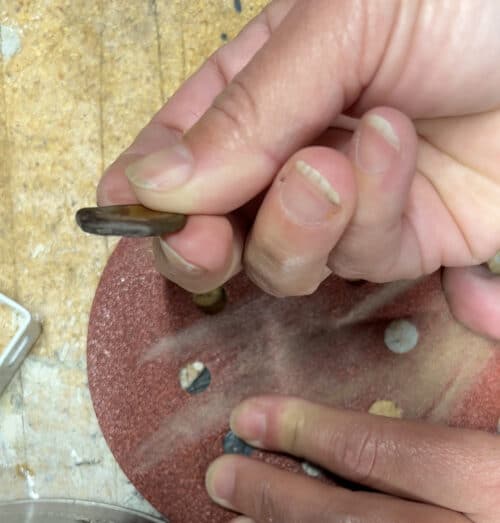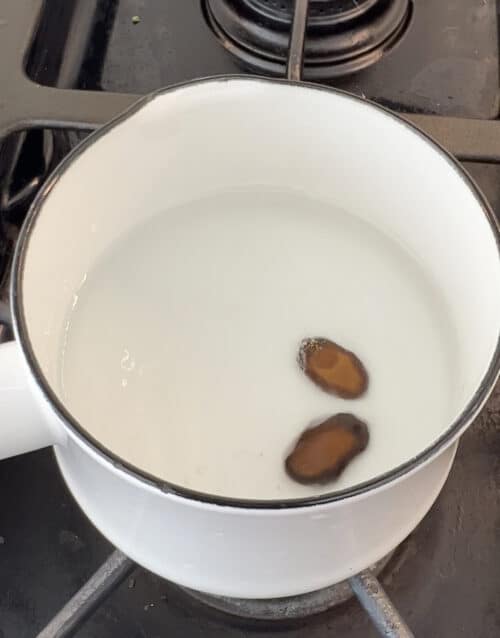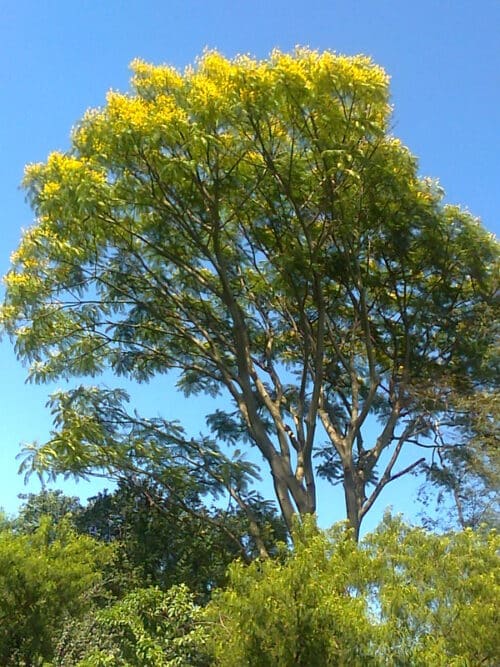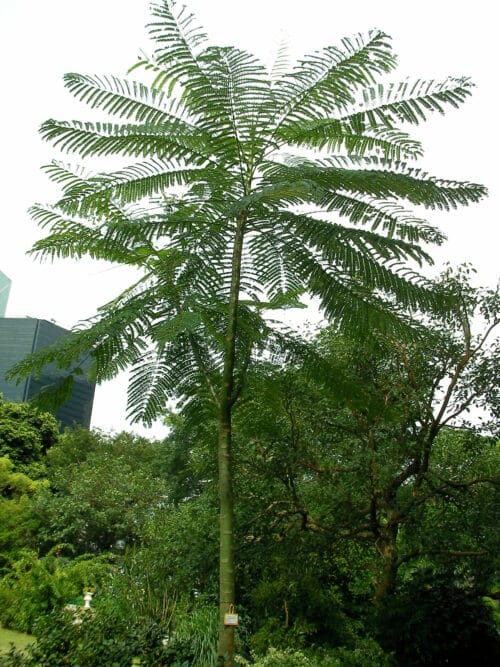There is a tendency to think of plants as delicate things that require coddling, but some demand the opposite treatment.
That’s how I found myself in a full-on assault a couple weeks ago as I engaged in the abuse of Brazilian fern tree seeds. The three-quarter-inch long, flat seeds were hard as a rock and the package they came in suggested it could take up to 180 days to germinate. I have better things to do than wait half a year for seeds to germinate so to speed up the process, some scarifying was in order.
This process of breaking down a seed’s hard outer coating, which protects a seed against harsh environmental conditions in its natural habitat, is necessary for germinating seeds “in capitivity” and involves several methods including nicking, soaking and scratching.
The rock-hard seeds of the Brazilian fern tree, also called Brazilian firetree (Schizolobium parahyba), received a combination treatment of sanding the edge with 80-grit sandpaper followed by a one-minute soak in boiling water. Sanding is a common method of scarification, but the boiling water method is reserved for the toughest seeds. Soaking for a few hours in tepid water is a widely used practice for seeds such as nasturtiums and peas.


My decision to attempt to grow this plant happened within about two minutes of seeing it for the first time. I was intrigued by the plant mentioned in a gardening webinar by Janet Draper, a horticulturist at the Smithsonian Gardens. She’d picked up a spare plant from Chanticleer Gardens in Pennsylvania and watched it grow into a monster specimen in a single season.
It’s not a fern, but its long leaves, covered with 40 to 60 leaflets, resemble a fern. Native from Central America to Brazil, it can grow up to 10 feet in a single season. I’m intrigued by incredibly fast-growing plants and recognized it immediately as an excellent experiment for this gardening season. I ordered seeds before the webinar ended.
Large, bright yellow flowers cover the tree in tropical areas. Even if it grows well for me, I don’t expect to see flowers.

I haven’t found any information on growing this potential behemoth in Wisconsin, but I know enough about it to have a good guess at the conditions it will appreciate: full sun and rich, moist soil.

I planted the abused seeds in moist seed-starting mix at the end of February and have had them under a humidity dome and on a heat mat in my best attempt to mimic Brazil’s forest floor. As I waited impatiently I noticed something I’ve never seen seeds do before: the seeds grew. They are actually got longer. I assume this was caused by the seed coat softening or breaking down in preparation for germination, which did happen for one seed after about two and a half weeks.
Five seeds came in the packet and I only planted two, an heir and spare, if you will. I can always take another crack at growing this plant with the rest of the seeds, perhaps trying out a different scarification method.
If my seed abuse works, the experiment can continue, and perhaps I’ll have an oddly large, tropical tree growing in my summer garden.

